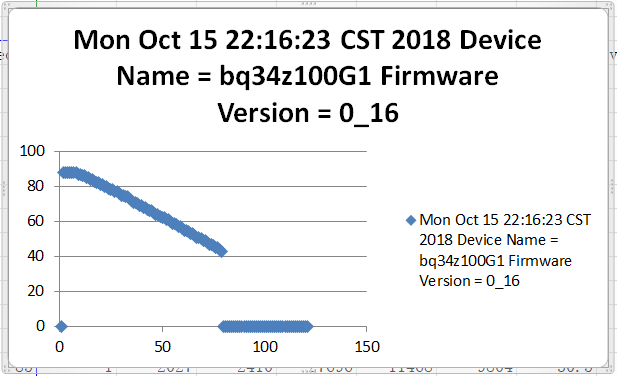Other Parts Discussed in Thread: GPCCHEM
4101.log.xlsxDear All:
I used the BQ34Z100-G1 to measure the 8S1P PACK, I made ten prototypes, the most of which are OK, but two of them are bad. the bad prototypes shows the phenomenon that the SOC drop about 40% to 0% in an instant. Pls refer to the attachment and picture. I program the same SREC profile. and calibration the voltage ,current follow the procedure. Can you help me to solve the problem~ Thanks


